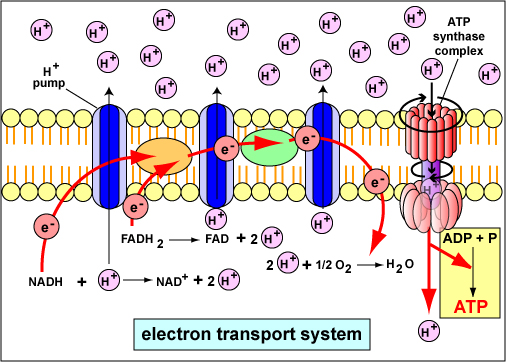
NADH and FADH2 carry protons (H+) and electrons (e-) to the electron transport chain located in the membrane. The energy from the transfer of electrons along the chain transports protons across the membrane and creates an electrochemical gradient. As the accumulating protons follow the electrochemical gradient back across the membrane through an ATP synthase complex, the movement of the protons provides energy for synthesizing ATP from ADP and phosphate. At the end of the electron transport system, two protons, two electrons, and half of an oxygen molecule combine to form water. Since oxygen is the final electron acceptor, the process is called aerobic respiration.
Last updated: Feb., 2021
Please send comments and inquiries to Dr.
Gary Kaiser